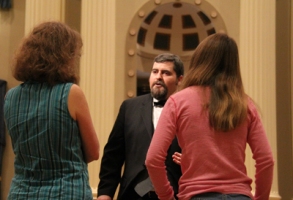I love Christmas time. It is a wonderful holiday that to me represents all that is best in the world; spending time with friends and family, sharing and giving, peace and good will, and open recognition of our lord and savior. As a historian, I’ve always been intrigued with the holiday in at least one other way, as well. Few observances of any kind in this country demonstrate more visibly the power of shared tradition and custom.

I’ve always been particularly struck by how many of our holiday songs and imagery are replete with references to a version of Christmas that very few of us have ever experienced, for example, yet they are so ubiquitous that we simply can’t imagine celebrating December 25th any other way no matter where we live. As a case in point, I live in the Deep South, and have never seen a “white Christmas”; indeed I’ve had opportunity to build perhaps 2 or 3 snowmen worthy of the title in my lifetime. While “jack frost” does nip at us down here, it is pretty rare to need anything more than a light jacket on Christmas Day. I’ve never roasted chesnuts over an open fire—indeed few Americans ever have as the chesnut blight of the early 1900s virtually rendered the species extinct by mid-century. And how many of us anywhere have ever ridden in a sleigh or gathered around a yule log? I could go on and on but the point is made. Just think of all the imagery—largely Victorian and overwhelmingly northeastern and even European in origin—that we associate with Christmas celebrations. Whether we reside in Boston, Mobile, or Denver or have ancestry from Europe, Africa or Asia, red and green sweaters, icicles, and snow are symbols of the holiday whether or not they are really part of our lives at this time of year. There are real historical reasons for all this, which I will not attempt to go into now even if I could.
On a more serious note, I would like to say that I think it is great that we have a few things that can still unite us in this country even if they are sometimes so artificial and trivial they can border on the comical. Every year on December 25th and all throughout the weeks before it, a majority of Americans, despite the innumerable cultural, political, and religious differences among us, seem to more or less agree to observe one of our most important holidays with remarkably similar symbols that have very little to do with our actual situations and many of us stop and contemplate things of far more importance than our daily selfish routines even if for a moment.
Of course there are a lot of major exceptions to this rosy view of things, and there are a lot of people for whom Christmas holds little importance. And there is a growing number for whom Christmas somehow manages to be a special holiday, but unfortunately an entirely secular one devoid of any deeper spiritual meaning. We are a diverse country, and I guess that in some respects that is ok. We each get to set our own priorities. But I also think it is ok that a majority of us do hold the holiday in high regard as a fundamental expression of our faith and worldview and that we share a vision for the way it looks and feels in both serious and lighthearted ways that transcend time, place, and, in many ways, our realities.
Of course Christmas is much more important than songs about red-nosed reindeer or Christmas cards with depictions of snow-covered homes, but it shows just how strongly the holiday and its many traditions are engrained in our culture that they are nearly universally recognized. I hope it will always be so.
Merry Christmas!
JMB









